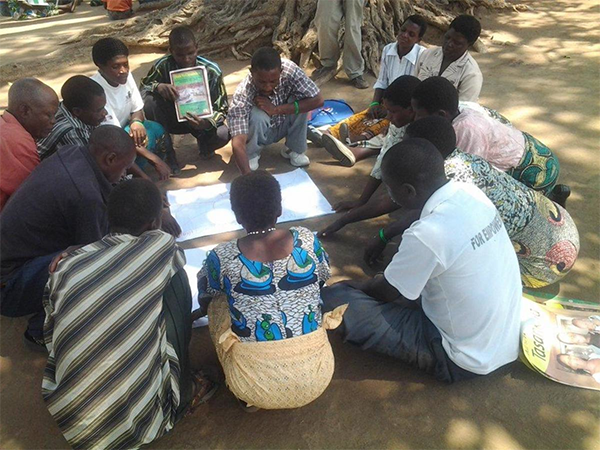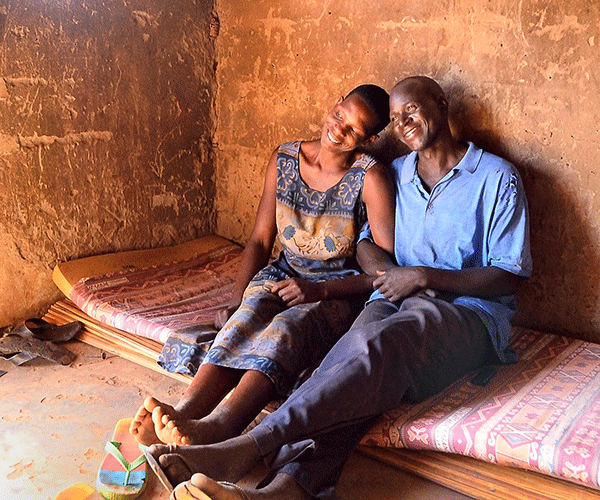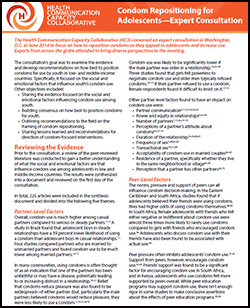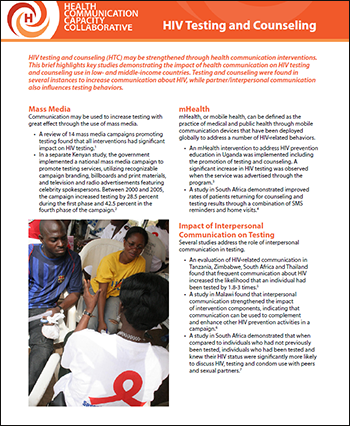
Overcoming Seasonality in Scaling Up Voluntary Medical Male Circumcision: A Case Study from Tanzania
This case study examines the VMMC program launched in 2009 in…

Partnering with Private Providers in South Africa to Offer Medical Male Circumcision Services
The Health Communication Capacity Collaborative (HC3) published…

Scaling Up Routine Early Infant Male Circumcision Within Maternal, Newborn and Child Health
In this webinar, held Jan. 28, 2015, global health experts considered…

Webinar: Women and Voluntary Medical Male Circumcision
Presentations and recording of the Nov. 19, 2014, webinar:
VIEW: Webinar Recording |…

Condom Repositioning for Adolescents- Expert Consultation
The Health Communication Capacity Collaborative (HC3) convened…

Strategic Roles for Health Communication in Combination HIV Prevention and Care Programs
Co-sponsored by the CFAR Prevention Core and Health Communication…

The Impact of Community-Level Factors on Condom Use
Community-level factors, ranging from social capital to collective efficacy, play an important role in condom use. This brief highlights key studies demonstrating the impact of community-level factors on condom use in low and middle-income countries.

Health Communication Impact on Condom Use
Condom use can be promoted through various ways within a health communication context, including mass media, entertainment-education, interpersonal communication and school-based interventions. This brief highlights key studies demonstrating the impact of health communication on condom use in low- and middle-income countries.

HIV Testing and Counseling
HIV testing and counseling (HTC) may be strengthened through…

Impact of Health Communication Across the HIV Treatment Cascade
Current research underlines the importance of interpersonal communication in linkage to care through counseling, both in clinical settings and at patients’ homes.

Impact of Community Level Factors on HIV Outcomes
On July 1, HC3 held the third in a series of four webinars focusing on different aspects of HIV and health communication. Presentations focused on community level factors shown to impact HIV, what they are and what effect they have; community-level determinants that potentiate or mitigate HIV outcomes among key populations; and included an example of a community-based project that aimed to reduce HIV transmission and stigma in Mozambique by targeting social and gender factors.
